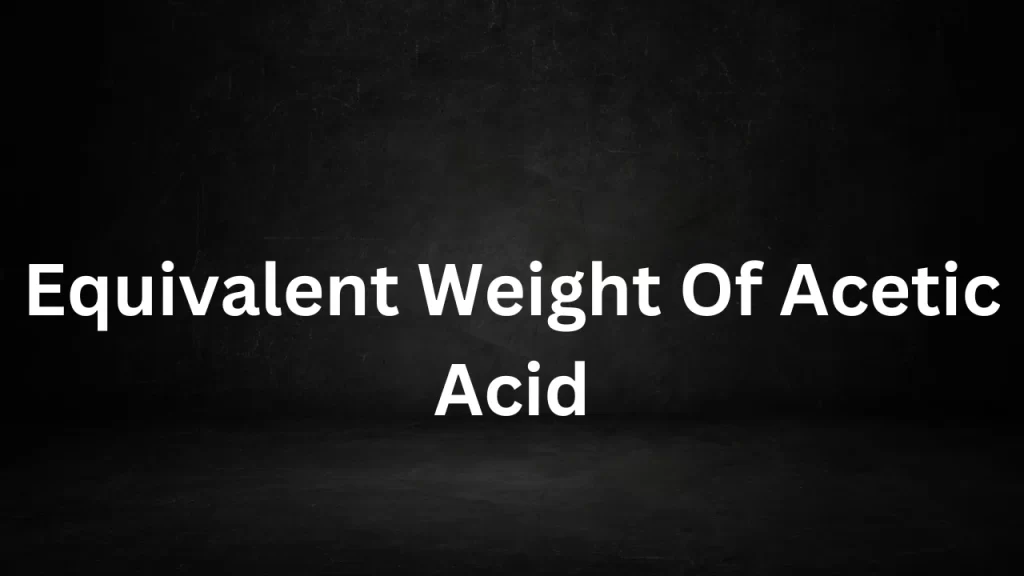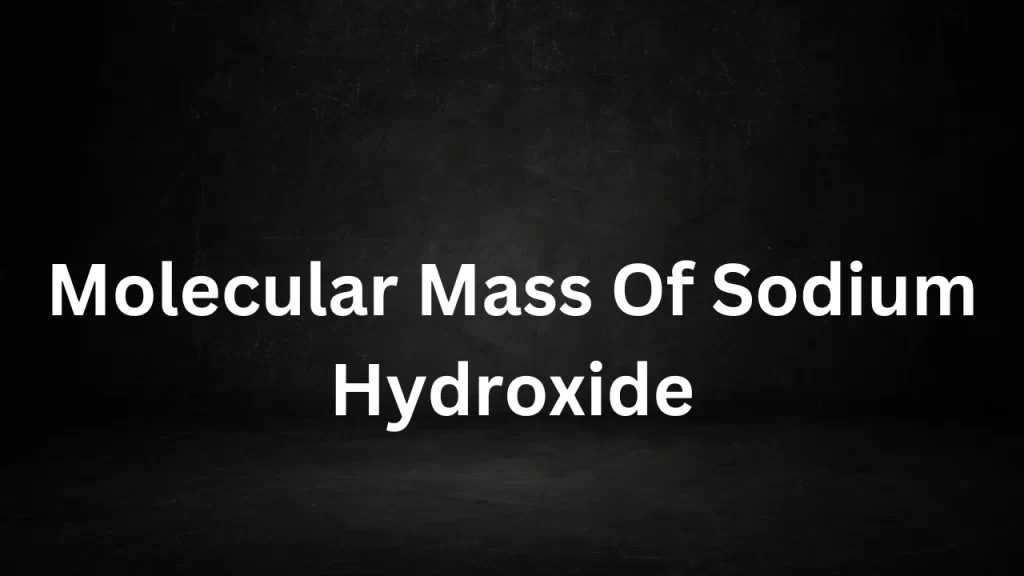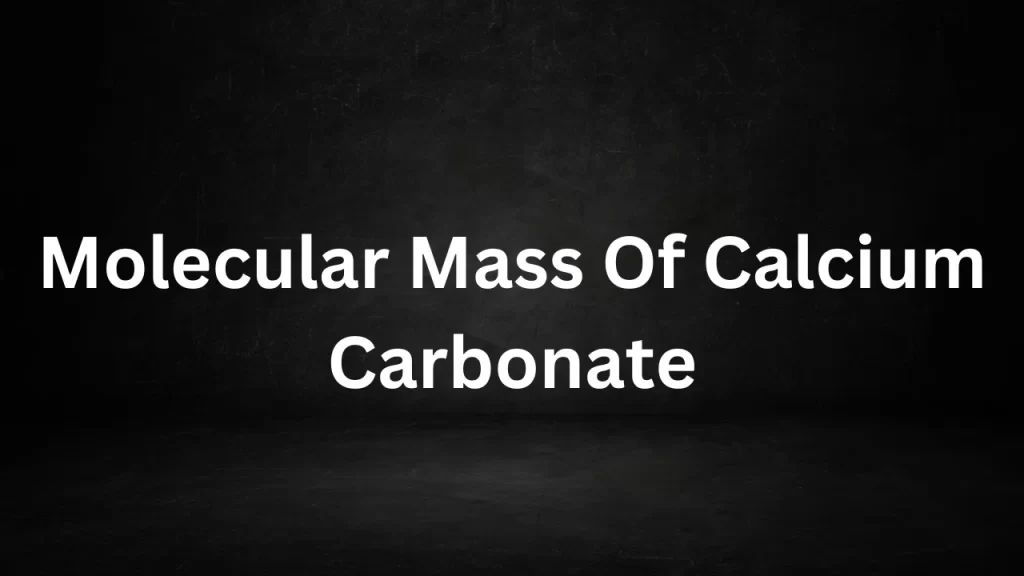Blog
Electric Currents In Conductors
Electric Currents In Conductors: Electricity, one of the most transformative discoveries in human history, powers our modern world. At its heart lies the concept of electric current, the flow of electric charge through conductors.
Understanding how electric currents work is essential for harnessing this powerful force for various applications, from lighting our homes to driving complex electronic devices.

Electric Currents In Conductors
1. What is Electric Current?
Electric current is the movement of electric charge through a conductor. It is analogous to the flow of water in a pipe: the flow of water represents the flow of electric charge. The measurement unit for electric current is amperes (A), and it represents a fundamental concept in both physics and electrical engineering.
2. Conductors and Insulators
Not all materials allow electric charge to flow freely. Materials are classified as conductors, insulators, or semiconductors depending on their electrical conductivity properties.
- Conductors: Materials like metals (e.g., copper, aluminum, silver) are excellent conductors of electricity. Such materials contain a surplus of free electrons that can effortlessly migrate within the substance upon the application of voltage.
- Insulators: Materials like rubber, plastic, and wood are insulators. They prohibit the movement of electric charge because their electrons are firmly bound to their atoms, rendering them ineffective conductors.
- Semiconductors: Materials like silicon and germanium have intermediate properties. Their electrical conductivity can be adjusted by introducing impurities or subjecting them to external influences, rendering them vital in electronics.
3. The Flow of Electrons
In conductors, the flow of electric current is made possible by the movement of electrons, which are negatively charged particles located in the outermost energy levels of atoms. The application of a voltage (electric potential difference) across a conductor creates an electric field that exerts a force on these electrons, initiating their movement.
4. Direction of Current Flow
In the past, the direction of current flow was first defined as the movement of positive charges, known as conventional current. However, it was later verified that electrons, bearing negative charges, are indeed the actual carriers of electric current. Hence, the universally accepted understanding is that current moves from the negative terminal (cathode) to the positive terminal (anode) in a circuit, known as electron flow.
5. Ohm’s Law
Ohm’s Law, formulated by the German physicist Georg Simon Ohm, describes the relationship between voltage (V), current (I), and resistance (R) in a conductor:
In simpler terms, Ohm’s Law states that the current in a conductor is directly proportional to the voltage applied across it and inversely proportional to its resistance. This law is fundamental in understanding and designing electrical circuits.
6. Resistance and Conductivity
Resistance is a property of materials that opposes the flow of electric current. It is measured in ohms (Ω). Conductors have low resistance, allowing current to flow easily, while insulators have high resistance, preventing current flow. Conductivity (σ), the inverse of resistance, quantifies a material’s capacity to conduct electricity effectively.
7. Factors Affecting Resistance
Several factors affect the resistance of a conductor:
- Length: Longer conductors have higher resistance because electrons have to travel a greater distance, encountering more resistance.
- Cross-Sectional Area: Wider conductors have lower resistance because there is more space for electrons to flow.
- Temperature: In most conductors, resistance increases with temperature. This is not the case for superconductors, which have zero resistance at very low temperatures.
- Material: Different materials have different resistivities, affecting their inherent resistance. For example, copper is a popular choice for electrical wiring due to its favorable low resistivity.
8. Types of Electric Current
There are two primary types of electric current:
- Direct Current (DC): In DC, the flow of electric charge is unidirectional, meaning it always flows in the same direction. Batteries and solar cells are sources of DC.
- Alternating Current (AC): In AC, the direction of electric current periodically reverses, usually at a fixed frequency. For both household and industrial electricity distribution, the predominant type of current in use is Alternating Current (AC).
9. Applications of Electric Current
Electric currents have countless practical applications, including:
- Power Generation: Electric current is utilized to produce electricity in power plants, often achieved by the rotation of generators.
- Electronics: Electric currents power a wide range of electronic devices, from smartphones to computers.
- Lighting: Electric currents find application in diverse lighting forms, encompassing incandescent, fluorescent, and LED lighting.
- Heating: Electric currents can generate heat, as seen in electric heaters and stovetops.
- Transportation: Electric currents drive electric vehicles (EVs) and are used in the operation of trains and trams.
- Medical Devices: Electric currents are employed in various medical devices, such as pacemakers and MRI machines.
Conclusion
Electric currents in conductors are at the core of our modern technological world. Understanding the principles of electric current, including Ohm’s Law, resistance, and conductivity, is essential for designing and working with electrical circuits. The ability to control and harness electric currents has revolutionized industries, improved our quality of life, and continues to drive innovations in various fields.
Read More
- Band Theory Of Solids
- Molar Mass of Ethylene Glycol
- Chemistry In Daily Life
- Modern Physics Class 12
- AC Generator Class 12th
Frequently Asked Questions (FAQs) On Electric Currents In Conductors
1. What is electric current, and how is it measured?
Electric current is the flow of electric charge through a conductor. Electric current is quantified in amperes (A), signifying the rate of electric charge flow over a specific time interval.
2. How does electric current flow in conductors?
The flow of electrons is responsible for carrying electric current within conductors. The application of voltage across a conductor generates an electric field that acts upon electrons, inducing their motion.
3. What is the direction of current flow in a circuit?
The traditional definition of electric current describes it as flowing from the negative terminal (cathode) to the positive terminal (anode), known as electron flow.
4. What are conductors, insulators, and semiconductors?
Conductors are materials that allow electric charge to flow easily. Metals like copper and aluminum are good examples.
Insulators are materials that do not allow the flow of electric charge. Rubber, plastic, and wood are common insulators.
Semiconductors are materials possessing intermediate characteristics that can be manipulated to conduct or insulate based on external factors.
5. What is Ohm’s Law, and how does it relate to electric current?
Ohm’s Law states that the current (I) in a conductor is directly proportional to the voltage (V) across it and inversely proportional to its resistance (R). In mathematical terms, Ohm’s Law can be expressed as V = I × R.
Band Theory Of Solids
Band Theory Of Solids: The Band Theory of Solids is a fundamental concept in condensed matter physics that serves as the cornerstone for our understanding of the electronic properties of materials.
This theory plays a pivotal role in explaining why some materials conduct electricity, while others do not, and it forms the basis for the design and development of countless electronic devices that have revolutionized our modern world. In this article, we will delve into the Band Theory of Solids, exploring its historical development, key principles, and real-world applications.

Band Theory Of Solids
Historical Development
The Band Theory of Solids has its roots in the late 19th and early 20th centuries when physicists began to investigate the behavior of electrons in materials. It was not until the 1930s, however, that the theory began to take shape with the work of Felix Bloch and Rudolf Peierls. These scientists made significant contributions to our understanding of the electronic structure of solids.
Felix Bloch’s most notable contribution was the development of Bloch’s theorem, which describes the wave-like behavior of electrons in crystalline materials. Bloch showed that electrons in a crystalline lattice experience periodic potentials, resulting in the formation of energy bands and band gaps.
Rudolf Peierls, on the other hand, focused on the effects of impurities and defects in crystalline materials. His work on what is now known as the Peierls transition revealed how slight lattice distortions could significantly impact a material’s electronic properties.
The culmination of these efforts laid the groundwork for the Band Theory of Solids, which was further refined and expanded upon by other prominent physicists, including John Bardeen, Walter Brattain, and William Shockley, who shared the Nobel Prize in Physics in 1956 for their work on semiconductors and the invention of the transistor.
Key Principles of Band Theory
The Band Theory of Solids revolves around several key principles that help us understand the behavior of electrons in materials. These principles are crucial in explaining a material’s electrical conductivity, optical properties, and more.
Energy Bands: In a crystalline solid, electrons do not exist in discrete energy levels like they do in isolated atoms. Instead, electrons form energy bands, which are continuous ranges of energy levels. The two primary bands in Band Theory are the valence band and the conduction band.
Valence Band: The valence band is the lower energy band, and it is typically filled with electrons in their ground state. Electrons in the valence band are tightly bound to the atomic nuclei of the material and are not free to move.
Conduction Band: Above the valence band lies the conduction band, which contains higher energy levels. Electrons in the conduction band are not bound to any specific nucleus and are free to move through the material, contributing to its electrical conductivity.
Energy Gap or Band Gap: The energy gap, often referred to as the band gap, is the energy difference between the valence band and the conduction band. It is a critical parameter that determines a material’s electrical behavior. Materials can be classified as conductors, insulators, or semiconductors based on the size of their band gap.
Conductors: Materials with small or no band gaps, such as metals, have many available energy states in the conduction band, allowing electrons to move easily and conduct electricity.
Insulators: Materials with large band gaps, like most ceramics, have a significant energy gap between the valence and conduction bands. They do not conduct electricity under normal conditions because the electrons in the valence band cannot overcome the energy barrier to reach the conduction band.
Semiconductors: Semiconductors have a moderate band gap that allows them to exhibit both insulating and conducting properties. By introducing small amounts of impurities or applying external influences like temperature or voltage, semiconductors can switch between conducting and insulating states, making them essential for electronic devices.
Real-World Applications
The Band Theory of Solids underpins numerous technological advancements and practical applications across various industries. Here are some of the key areas where this theory plays a crucial role:
Semiconductor Electronics: Perhaps the most significant application of the Band Theory is in the field of semiconductor electronics. Semiconductors like silicon, gallium arsenide, and others are the building blocks of modern electronic devices. Transistors, diodes, integrated circuits, and microprocessors all rely on the controlled manipulation of electrons in the conduction and valence bands to perform various functions, from amplifying signals to processing data.
Optoelectronics: Optoelectronic devices, such as light-emitting diodes (LEDs) and photodetectors, operate based on the principles of Band Theory. When electrons transition between energy levels in a semiconductor, they emit or absorb photons, leading to the emission or detection of light. This technology is used in displays, optical communications, and sensors.
Solar Cells: Solar cells, also known as photovoltaic cells, convert sunlight into electricity by harnessing the energy of photons to create electron-hole pairs in a semiconductor material. The Band Theory helps in the design and optimization of materials for efficient solar energy conversion.
Superconductors: While superconductivity itself is a complex phenomenon, the Band Theory provides insights into the electronic behavior of certain superconducting materials. Superconductors, which exhibit zero electrical resistance and expulsion of magnetic fields at low temperatures, have applications in power transmission, medical imaging, and particle accelerators.
Materials Science and Engineering: Understanding the electronic properties of materials through Band Theory is essential for developing new materials with tailored properties. This knowledge is applied in the design of stronger, lighter, and more durable materials for aerospace, automotive, and structural engineering.
Quantum Computing: Band Theory principles are pertinent in quantum computing, where manipulating quantum-level electron states is vital in information processing.
Challenges and Future Directions
Although the Band Theory of Solids has effectively explained electron behavior in various materials, it has its limitations. For example, it assumes a perfect, periodic crystal lattice, which is not always the case in real-world materials. Furthermore, it does not consider electron-electron interactions, which can be substantial in specific scenarios, like high-temperature superconductors.
To address limitations, scientists are refining theoretical models for electron behavior in complex materials. This includes the development of density functional theory (DFT), which allows for a more realistic treatment of electron-electron interactions.
Moreover, the pursuit of novel materials with distinct electronic properties persists, spurred by the demand for faster, energy-efficient devices. Scientists investigate innovative materials like topological insulators and 2D graphene, challenging traditional band structure concepts and advancing technology.
Conclusion
Band Theory is crucial in comprehending material electronic properties and has driven numerous technological innovations. Band Theory is central to modern science and technology, influencing semiconductor electronics and advanced material design.
Continued research in electron behavior and materials science promises groundbreaking technology and materials shaping our future. The Band Theory of Solids, with its enduring relevance, will remain a guiding principle in these exciting endeavors.
Read More
- Molar Mass of Ethylene Glycol
- Chemistry In Daily Life
- Modern Physics Class 12
- AC Generator Class 12th
- Ethylene Glycol Molar Mass
Frequently Asked Questions (FAQs) on Band Theory Of Solids
1. What is the Band Theory of Solids?
The Band Theory of Solids is a fundamental concept in condensed matter physics that explains the electronic structure of solids. It explains how electrons in a crystal create energy bands and band gaps, influencing electrical conductivity and properties.
2. What are energy bands in the context of Band Theory?
Energy bands are continuous ranges of energy levels in a crystalline solid. The two main energy bands in Band Theory are the valence band (lower energy) and the conduction band (higher energy). Valence band electrons are tightly linked to nuclei, whereas conduction band electrons are free and mobile, facilitating electrical conduction.
3. What is the valence band and the conduction band?
The valence band signifies the energy range where electrons usually reside in their lowest energy state. Electrons in this band have strong affiliations with atomic nuclei and limited mobility. The conduction band has higher energy levels, enabling electrons to move freely and contribute to electrical conduction.
4. What is a band gap?
The energy gap, or band gap, is the energy distinction between the valence and conduction bands. It is a critical parameter in Band Theory, as it determines whether a material is a conductor, insulator, or semiconductor.
5. How do materials with small band gaps differ from those with large band gaps?
Metals, with minimal band gaps, offer numerous energy states in the conduction band, facilitating efficient electron conductivity. Insulators, characterized by wide band gaps, possess substantial energy barriers separating valence and conduction bands, hindering electron flow.
Equivalent Weight Of Acetic Acid
Equivalent Weight Of Acetic Acid: The equiv weight of acetic acid, also known as ethanoic acid, is a fundamental concept in chemistry that plays a crucial role in various chemical reactions and stoichiometric calculations.
Acetic acid is a common organic acid with widespread applications in industries ranging from food and pharmaceuticals to chemical manufacturing and beyond. In this article, we will delve into the concept of the equivalent weight of acetic acid, its calculation, its importance across various domains, and its real-world applications.

Equivalent Weight Of Acetic Acid
Defining Equivalent Weight
Equivalent weight, often referred to as the gram equiv weight (GEW), is a measure of the reactive capacity of a substance concerning a specific chemical reaction. It is defined as the mass of a substance capable of either gaining or losing one mole of electrons in a chemical reaction. For acetic acid (CH3COOH), the equivalent weight represents the weight of the acid that can donate or accept one mole of protons (H+ ions) in a reaction.
Calculating the Equivalent Weight of Acetic Acid
The equiv weight of acetic acid (CH3COOH) can be calculated using its molecular weight and the specific reaction of interest. Here is the general formula for calculating the equivalent weight:
Equivalent Weight (GEW) = Molecular Weight / n
Where:
- Molecular Weight: The molecular weight of acetic acid, which is calculated by summing the atomic masses of its constituent elements (C, H, and O).
- n: The number of moles of protons (H+ ions) that can be gained or lost by one mole of acetic acid in a given reaction.
For acetic acid, n is 1, as it can donate or accept one mole of protons.
Significance in Chemistry
- Acid-Base Reactions: The equiv weight of acetic acid is crucial in acid-base reactions. It specifies the amount of acetic acid needed to neutralize or react with a base, or conversely, the quantity of a base required to react with acetic acid. This is essential in titration experiments and analytical chemistry.
- Stoichiometry: In stoichiometry, equiv weights serve the purpose of balancing chemical equations and accurately computing the quantities of reactants and products involved. The equivalent weight of acetic acid aids in these calculations in reactions where it participates.
Practical Applications
- Food Industry: Acetic acid is commonly used as a food preservative and flavoring agent. Its equivalent weight is important for ensuring precise formulations in food production.
- Pharmaceuticals: Pharmaceutical manufacturing extensively utilizes acetic acid in the formulation of various medications and drugs. Understanding its equiv weight is essential for dosage calculations and product quality control.
- Chemical Manufacturing: Acetic acid serves as a precursor in the production of various chemicals and plastics. Its equiv weight influences reaction conditions and yield optimization.
- Analytical Chemistry: Equivalent weights play a crucial role in analytical chemistry, particularly in the determination of acetic acid concentrations in solutions using titration techniques.
Conclusion
The equiv weight of acetic acid (CH3COOH) is a fundamental concept in chemistry with broad applications in various industries and scientific fields. It plays a pivotal role in acid-base reactions, stoichiometry, and analytical chemistry, ensuring accurate measurements and calculations. Acetic acid plays a vital role in the food industry, pharmaceuticals, chemical manufacturing, and analytical laboratories, emphasizing precise formulations and quality control. Understanding the equiv weight of acetic acid is not only a fundamental aspect of chemistry but also a key factor in addressing practical challenges across diverse applications.
Read More
- Law Of Conservation Of Mass
- Drops Bubbles And Capillary Rise
- Black Body Radiation Wien Displacement Law
- Gaseous state class 11
- Fajans Rule Class 11
Frequently Asked Questions (FAQs) On Equivalent Weight Of Acetic Acid
1. What is the equivalent weight of acetic acid (CH3COOH)?
The equiv weight of acetic acid is ascertained by dividing its molecular weight by the number of moles of protons (H+ ions) it can either donate or accept in a specific chemical reaction. For acetic acid, this value is approximately equal to its molecular weight.
2. Is the equivalent weight of acetic acid specific to its source or grade?
The equiv weight of acetic acid is an inherent property, impervious to variations in its source or quality. It remains consistent for pure acetic acid.
3. Can the equivalent weight of acetic acid change under specific conditions?
The equiv weight of acetic acid remains relatively constant under standard conditions. However, it may vary slightly with changes in temperature and concentration.
4. Why is the concept of equivalent weight important in chemistry?
Equivalent weight is crucial in chemistry, determining the weight of substances involved in electron transfer reactions. This concept is particularly useful in stoichiometry, acid-base reactions, and titration experiments.
5. In which types of chemical reactions is the equivalent weight of acetic acid relevant?
The equiv weight of acetic acid is relevant in acid-base reactions where it can donate or accept protons (H+ ions). This includes reactions such as titrations and neutralizations.
Molecular Mass Of Sodium Hydroxide
Molecular Mass Of Sodium Hydroxide: The mole mass of sodium hydroxide (NaOH) is a critical concept in chemistry, providing essential information about the composition and weight of this commonly used compound.
Sodium hydroxide, also known as caustic soda or lye, plays a pivotal role in various industrial processes, scientific experiments, and even household applications. In this article, we will explore what the molecular mass of sodium hydroxide is, how it is calculated, its significance in different fields, and its practical applications.

Molecular Mass Of Sodium Hydroxide
Understanding Molecular Mass
Molecular mass, also known as molar mass, refers to the mass of one mole of a specific substance, expressed in grams per mole (g/mol). In the case of sodium hydroxide (NaOH), its molecular mass represents the combined mass of one mole of sodium (Na) atoms, one mole of oxygen (O) atoms, and one mole of hydrogen (H) atoms.
Calculating the Molecular Mass
To calculate the mole mass of sodium hydroxide (NaOH), we add the atomic masses of its constituent elements:
- Sodium (Na): Atomic mass ≈ 22.99 g/mol
- Oxygen (O): Atomic mass ≈ 16.00 g/mol
- Hydrogen (H): Atomic mass ≈ 1.01 g/mol
Now, let’s calculate the mole mass of NaOH:
Molecular Mass of NaOH = (Molar Mass of Na) + (Molar Mass of O) + (Molar Mass of H) Molecular Mass of NaOH = (22.99 g/mol) + (16.00 g/mol) + (1.01 g/mol) Molecular Mass of NaOH ≈ 40.00 g/mol
Therefore, the mole mass of sodium hydroxide (NaOH) is approximately 40.00 grams per mole (g/mol).
Significance in Chemistry
- Stoichiometry: Sodium hydroxide’s molar mass is fundamental in stoichiometry, which involves calculating the quantities of reactants and products in chemical reactions involving NaOH. This plays a crucial role in various chemical industries.
- Analytical Chemistry: In laboratories, precise measurements of reagents and solutions, including sodium hydroxide, rely on its molar mass for accurate calculations and analytical procedures.
- Titration: Sodium hydroxide is often used as a strong base in titration experiments, where the molar mass is essential for determining the concentration of acids or other substances.
Practical Applications
- Chemical Manufacturing: Sodium hydroxide is a key ingredient in the production of various chemicals, including detergents, paper, textiles, and soap. Its molar mass is crucial in formulating these products.
- Water Treatment: In water treatment plants, NaOH is used for pH adjustment and water purification. Its molar mass is essential for precise dosing and chemical treatment.
- Soap and Cleaning Products: Sodium hydroxide is used in the production of soap and cleaning agents. Its molar mass influences product formulations and properties.
- Food Industry: It is employed for food preparation and processing, particularly in the production of foods like pretzels and hominy. Its molar mass is important for adherence to safety regulations.
Conclusion
The mole mass of sodium hydroxide (NaOH), approximately 40.00 g/mol, is a fundamental concept in chemistry with wide-reaching applications. It is indispensable in stoichiometry, analytical chemistry, and titration experiments, providing accurate measurements and calculations. Sodium hydroxide’s significance extends to various industries, including chemical manufacturing, water treatment, and the production of soap and cleaning products. Understanding the mole mass of sodium hydroxide is not only a foundational concept in chemistry but also a key factor in addressing practical challenges in diverse fields, from industrial processes to everyday applications.
Read More
- Molar Mass Of Ethyl Alcohol
- Molecular Mass Of Calcium Carbonate
- Molar Mass Of Carbon Dioxide
- Difference Between Force And Momentum
- Law Of Conservation Of Linear Momentum
- Molecular Weight Of MgSO4
- Molecular Weight Of H3PO4
Frequently Asked Questions (FAQs) On Molecular Mass Of Sodium Hydroxide
1. What is the molecular mass of sodium hydroxide (NaOH)?
The molecular mass of sodium hydroxide (NaOH) is approximately 40.00 grams per mole (g/mol).
2. How is the molecular mass of sodium hydroxide calculated?
To determine the molecular mass of NaOH, one adds together the atomic masses of its component elements: sodium (Na), oxygen (O), and hydrogen (H).
3. What is the atomic mass of sodium (Na)?
The atomic mass of sodium is approximately 22.99 g/mol.
4. What is the atomic mass of oxygen (O)?
The atomic mass of oxygen is approximately 16.00 g/mol.
5. What is the atomic mass of hydrogen (H)?
The atomic mass of hydrogen is approximately 1.01 g/mol.
Molar Mass Of Ethyl Alcohol
Molar Mass Of Ethyl Alcohol: The molar mass of ethyl alcohol, also known as ethanol, is a critical concept in chemistry.
Ethanol is a highly utilized and extensively studied organic compound, with diverse applications spanning beverages, industrial processes, fuels, and pharmaceuticals. This article will explore the molar mass of ethyl alcohol, its calculation, its importance across different domains, and its real-world uses.

Molar Mass Of Ethyl Alcohol
Defining Molar Mass
Molar mass refers to the mass of one mole of a particular substance, expressed in grams per mole (g/mol). In the case of ethyl alcohol (C2H5OH), its mol mass represents the combined mass of two moles of carbon (C) atoms, six moles of hydrogen (H) atoms, and one mole of oxygen (O) atom.
Calculating the Molar Mass
To calculate the mol mass of ethyl alcohol (C2H5OH), we sum the atomic masses of its constituent elements:
- Carbon (C): Atomic mass ≈ 12.01 g/mol
- Hydrogen (H): Atomic mass ≈ 1.01 g/mol
- Oxygen (O): Atomic mass ≈ 16.00 g/mol
Now, let’s calculate the molar mass of C2H5OH:
Molar Mass of C2H5OH = (2 × Molar Mass of C) + (6 × Molar Mass of H) + Molar Mass of O Molar Mass of C2H5OH = (2 × 12.01 g/mol) + (6 × 1.01 g/mol) + 16.00 g/mol Molar Mass of C2H5OH ≈ 6.07 g/mol
Therefore, the molar mass of ethyl alcohol (C2H5OH) is approximately 46.07 grams per mole.
Significance in Chemistry
- Stoichiometry: Ethyl alcohol’s molar mass is crucial in stoichiometry, which involves calculating the quantities of reactants and products in chemical reactions involving ethanol.
- Gas Laws: It is vital in the study of gases, where ethanol is often used as a reference substance to relate properties such as pressure, volume, temperature, and mass.
- Alcohol Content: In the beverage industry, understanding the molar mass of ethyl alcohol is essential for calculating the alcohol content in alcoholic beverages.
Real-World Applications
- Beverage Production: The mol mass of ethyl alcohol is used to determine the alcohol content in spirits, wines, and beers.
- Fuel Industry: Ethanol is a common biofuel, and its molar mass is significant in the production and energy calculations of bioethanol.
- Pharmaceutical Industry: Ethanol is used in pharmaceutical formulations, and its molar mass plays a role in dosage calculations and drug formulations.
- Chemical Processes: Ethanol finds use in a variety of industrial processes, with its molar mass being crucial for precise measurements and reactions.
Conclusion
The mol mass of ethyl alcohol (C2H5OH), approximately 46.07 g/mol, is a fundamental concept in chemistry with wide-ranging implications. It is indispensable in stoichiometry, gas law applications, alcohol content determination, and various real-world industries such as beverage production, fuel, pharmaceuticals, and chemical processes. Ethanol’s significance extends beyond the laboratory, making it a vital compound in both scientific research and practical applications across diverse fields. Understanding the mol mass of ethyl alcohol is not only a foundational concept in chemistry but also a key factor in addressing various societal and industrial needs.
Read More
- Molecular Mass Of Calcium Carbonate
- Molar Mass Of Carbon Dioxide
- Difference Between Force And Momentum
- Law Of Conservation Of Linear Momentum
- Molecular Weight Of MgSO4
Frequently Asked Questions (FAQs) On Molar Mass Of Ethyl Alcohol
1. What is the molar mass of ethyl alcohol (C2H5OH)?
The mol mass of ethyl alcohol, also known as ethanol (C2H5OH), is approximately 46.07 grams per mole (g/mol).
2. How does the molar mass of ethyl alcohol relate to gas laws?
In gas studies, ethanol’s molar mass is applied in gas laws, linking properties such as pressure, volume, temperature, and mass. Ethanol frequently serves as a reference substance in gas law applications.
3. What is the atomic mass of carbon (C)?
The atomic mass of carbon is approximately 12.01 g/mol.
4. What is the atomic mass of hydrogen (H)?
The atomic mass of hydrogen is approximately 1.01 g/mol.
5. What is the atomic mass of oxygen (O)?
The atomic mass of oxygen is approximately 16.00 g/mol.
Molecular Mass Of Calcium Carbonate
Molecular Mass Of Calcium Carbonate: The molecular mass of calcium carbonate, often referred to as calcium carbonate’s molar mass, is a fundamental concept in chemistry.
It plays a crucial role in various scientific fields, including chemistry, geology, environmental science, and industry. In this article, we will explore what the molecular mass of calcium carbonate is, how it is calculated, its significance, and its practical applications.

Molecular Mass Of Calcium Carbonate
Defining Molecular Mass
The molecular mass, also known as molar mass, of a compound is the mass of one mole of that substance expressed in grams per mole (g/mol). In the case of calcium carbonate (CaCO3), its molecular mass represents the combined mass of one mole of calcium (Ca) atoms, one mole of carbon (C) atoms, and three moles of oxygen (O) atoms.
Calculation of Molecular Mass
To calculate the mole mass of calcium carbonate (CaCO3), we sum the atomic masses of its constituent elements:
- Calcium (Ca): Atomic mass ≈ 40.08 g/mol
- Carbon (C): Atomic mass ≈ 12.01 g/mol
- Oxygen (O): Atomic mass ≈ 16.00 g/mol
Now, let’s calculate the mole mass of CaCO3:
Molecular Mass of CaCO3 = (Molar Mass of Ca) + (Molar Mass of C) + (3 × Molar Mass of O)
The Molecular Mass of CaCO3 = (40.08 g/mol) + (12.01 g/mol) + (3 × 16.00 g/mol)
Molecular Mass of CaCO3 ≈ 100.09 g/mol
Therefore, the mole mass of calcium carbonate (CaCO3) is approximately 100.09 grams per mole.
Significance in Chemistry
- Stoichiometry: The mole mass of calcium carbonate is fundamental in stoichiometry, allowing chemists to calculate the quantities of reactants and products in chemical reactions involving CaCO3.
- Formulation Chemistry: It is important in industries like agriculture and pharmaceuticals for formulating products that contain calcium carbonate.
- Environmental Science: Knowledge of the molecular mass of CaCO3 is essential for understanding its role in environmental processes, such as the dissolution of limestone in natural waters.
Real-World Applications
- Geology: The mole mass of calcium carbonate is crucial in geological studies, where it helps identify and quantify carbonate minerals in rocks and sediments.
- Agriculture: Calcium carbonate is commonly used as a soil conditioner and in the formulation of agricultural products, benefiting from its mole mass calculations.
- Pharmaceuticals: It finds applications in antacids and calcium supplements, where the molecular mass influences dosages and formulations.
- Environmental Monitoring: Understanding the mole mass is important for analyzing the presence and concentration of calcium carbonate in natural water bodies, which can affect water quality and aquatic life.
Conclusion
The mole mass of calcium carbonate (CaCO3), approximately 100.09 g/mol, is a foundational concept in chemistry with broad-reaching implications. It serves as a cornerstone in stoichiometry, formulating various industrial products, and understanding environmental processes. Additionally, its significance extends to geological studies, agriculture, pharmaceuticals, and environmental monitoring. An in-depth comprehension of the mole mass of calcium carbonate is not only essential for scientific research but also for addressing practical challenges in diverse fields.
Read More
- Molar Mass Of Carbon Dioxide
- Difference Between Force And Momentum
- Law Of Conservation Of Linear Momentum
- Molecular Weight Of MgSO4
- Molecular Weight Of H3PO4
Frequently Asked Questions (FAQs) On Molecular Mass Of Calcium Carbonate
1. What is the molecular mass of calcium carbonate (CaCO3)?
The mole mass of calcium carbonate (CaCO3) is approximately 100.09 grams per mole (g/mol).
2. How is the molecular mass of calcium carbonate calculated?
To calculate the molecular mass of CaCO3, you sum the atomic masses of its constituent elements: calcium (Ca), carbon (C), and oxygen (O).
3. What is the atomic mass of calcium (Ca)?
The atomic mass of calcium is approximately 40.08 g/mol.
4. What is the atomic mass of carbon (C)?
The atomic mass of carbon is approximately 12.01 g/mol.
5. What is the atomic mass of oxygen (O)?
The atomic mass of oxygen is approximately 16.00 g/mol.
Molar Mass Of Carbon Dioxide
Molar Mass Of Carbon Dioxide: The molar mass of carbon dioxide (CO2) is a fundamental concept in chemistry that plays a pivotal role in understanding chemical reactions, stoichiometry, and the behavior of gases.
This value is not only essential for academic purposes but also finds practical applications in various fields, including chemistry, environmental science, and industry. In this article, we will delve into the molar mass of carbon dioxide, its calculation, significance, and practical applications.

Molar Mass Of Carbon Dioxide
Defining Molar Mass
Molar mass denotes the weight of one mole of a specific substance, usually expressed in grams per mole (g/mol). In the case of carbon dioxide (CO2), the mol mass represents the combined mass of one mole of carbon (C) atoms and two moles of oxygen (O) atoms.
The Calculation
To determine the mol mass of carbon dioxide, we need to sum the atomic masses of its constituent elements, carbon (C) and oxygen (O), using their respective atomic masses found on the periodic table. The molar mass of carbon is approximately 12.01 g/mol, while the molar mass of oxygen is approximately 16.00 g/mol.
Using these values, we can calculate the molar mass of CO2 as follows:
Molar Mass of CO2 = (Molar Mass of C) + 2 × (Molar Mass of O) Molar Mass of CO2 = (12.01 g/mol) + 2 × (16.00 g/mol) Molar Mass of CO2 ≈ 44.01 g/mol
So, the mol mass of carbon dioxide (CO2) is approximately 44.01 grams per mole.
Significance in Chemistry
- Stoichiometry: The mol mass of carbon dioxide is crucial in stoichiometry, which involves calculating the quantities of reactants and products in chemical reactions. It helps chemists determine the amount of CO2 produced or consumed in a reaction.
- Gas Laws: In the study of gases, the molar mass of CO2 is used in various gas laws, such as the Ideal Gas Law, to relate the mass, volume, pressure, and temperature of gases.
- Combustion Reactions: Understanding the mol mass of CO2 is essential in combustion reactions, as it helps in calculating the amount of carbon dioxide produced when a substance burns.
Real-World Applications
- Environmental Science: Knowledge of the mol mass of CO2 is vital for measuring and monitoring greenhouse gas emissions, particularly in the context of climate change research.
- Industrial Processes: Industries utilize the molar mass of CO2 in processes such as carbon capture and storage (CCS), where CO2 is captured to reduce emissions.
- Food and Beverage Industry: The mol mass of CO2 is relevant in carbonation processes, as it helps in determining the amount of carbon dioxide needed to create carbonated beverages.
Conclusion
The mol mass of carbon dioxide (CO2), approximately 44.01 g/mol, s a fundamental concept in chemistry with wide-ranging implications. It serves as a key component in stoichiometry, gas laws, and combustion reactions, contributing to our understanding of chemical processes. Furthermore, its significance extends to real-world applications in environmental science, industry, and even everyday consumables. Understanding the molar mass of CO2 is not only a core concept in chemistry but also a crucial aspect of addressing contemporary environmental challenges.
Read More
- Difference Between Force And Momentum
- Law Of Conservation Of Linear Momentum
- Molecular Weight Of MgSO4
- Molecular Weight Of H3PO4
- Molecular Mass Of CaCl2
Frequently Asked Questions (FAQs) On Molar Mass Of Carbon Dioxide
1. What is the molar mass of carbon dioxide (CO2)?
The mol mass of carbon dioxide (CO2) is approximately 44.01 grams per mole (g/mol).
2. How is the molar mass of carbon dioxide calculated?
The molar mass of CO2 is determined by summing the molar masses of carbon (C) and two oxygen (O) atoms due to the molecule’s composition. The molar mass of C is approximately 12.01 g/mol, and the mol mass of O is approximately 16.00 g/mol.
3. Why is knowing the molar mass of carbon dioxide important?
Understanding the mol mass of CO2 is essential in chemistry for stoichiometry, gas laws, and combustion reactions. It also has real-world applications in environmental science, industry, and food and beverage production.
4. What is stoichiometry, and how is the molar mass of carbon dioxide used in it?
Stoichiometry is the study of the quantitative relationships between reactants and products in chemical reactions. In stoichiometry, the molar mass of CO2 calculates the CO2 amount in chemical reactions.
5. How is the molar mass of carbon dioxide relevant to the study of gases?
CO2’s molar mass is vital in gas laws, linking mass, volume, pressure, and temperature.
Law Of Conservation Of Mass
Law Of Conservation Of Mass: The Law of Conservation of Mass is one of the fundamental principles that underpin the field of chemistry. It asserts that within a closed system, mass remains conserved and cannot be either generated or eliminated.
This law was first formulated by Antoine Lavoisier, a French chemist, in the late 18th century and has since become a cornerstone of modern chemistry. In this article, we will explore the Law of Conservation of Mass, its historical context, its significance, and its applications in various scientific disciplines.

Law Of Conservation Of Mass
Historical Context
Prior to the development of the Law of Conservation of Mass, the predominant theory in chemistry was the phlogiston theory. This theory proposed the existence of a hypothetical substance called “phlogiston,” which it suggested was released during combustion. This theory failed to explain various chemical reactions accurately.
Antoine Lavoisier’s groundbreaking experiments in the late 18th century provided the experimental evidence needed to disprove the phlogiston theory and establish the Law of Conservation of Mass. His meticulous measurements and observations during chemical reactions led to the realization that the total mass of substances involved in a chemical reaction remained constant, regardless of the changes in their forms.
The Law Explained
The Law of Conser of Mass can be summarized as follows:
“In a closed system, the total mass of reactants before a chemical reaction is equal to the total mass of products after the reaction.”
This signifies that in a chemical reaction, atoms are neither generated nor annihilated; rather, they undergo reorganization to create new compounds. The law emphasizes the importance of balancing chemical equations, where the number of atoms of each element on the reactant side must be equal to the number on the product side.
Significance of the Law
- Fundamental Principle: The Law of Conser of Mass is a fundamental principle in chemistry that lays the foundation for understanding and predicting chemical reactions.
- Chemical Equations: It is crucial for writing and balancing chemical equations accurately, ensuring that all reactants and products are accounted for.
- Stoichiometry: The law is essential for stoichiometry, which involves calculating the quantities of reactants and products in chemical reactions.
- Mass Spectrometry: In modern analytical chemistry, mass spectrometry techniques are used to measure the mass of reactants and products, confirming the law’s validity.
Applications
- Chemical Industry: The law is fundamental in chemical manufacturing processes, ensuring that reactions proceed efficiently and safely while conserving resources.
- Environmental Science: “It finds use in examining and analyzing chemical reactions within environmental processes, including combustion and pollution management.”
- Nuclear Chemistry: The law remains applicable in nuclear reactions, where it accounts for the conservation of mass-energy, as described by Einstein’s E=mc² equation.
- Pharmaceutical Research: Chemists use the law to track the mass changes in chemical reactions during drug development and synthesis.
Conclusion
Antoine Lavoisier’s Law of Conser of Mass is a cornerstone of chemistry, shaping our comprehension of chemical reactions. Its historical significance lies in its role in dispelling outdated theories and ushering in the modern era of chemistry. This law serves as the foundation for chemical equations, stoichiometry, and various scientific applications, making it an enduring and invaluable concept in the world of science.
Read More
- Drops Bubbles And Capillary Rise
- Black Body Radiation Wien Displacement Law
- Gaseous state class 11
- Fajans Rule Class 11
- Plant Physiology Class 11
Frequently Asked Questions (FAQs) On Law Of Conservation Of Mass
1. What is the Law of Conservation of Mass?
“The Law of Conser of Mass in chemistry asserts that, in a closed system, the total mass remains constant.”
2. Who formulated the Law of Conservation of Mass?
The law was first formulated by Antoine Lavoisier, a French chemist, in the late 18th century.
3. What does the Law of Conservation of Mass imply about atoms in a chemical reaction?
It posits that in a chemical reaction, atoms undergo rearrangements to create new compounds, without being generated or annihilated.
4. Why is balancing chemical equations important in the context of this law?
Balancing chemical equations is crucial to maintain the law’s principle, ensuring equal numbers of atoms on both sides.
5. How is the Law of Conservation of Mass relevant in nuclear reactions?
The law applies to nuclear reactions but requires expansion to include mass-energy equivalence, as explained by E=mc².
Drops Bubbles And Capillary Rise
Drops Bubbles And Capillary Rise: Drops, bubbles, and capillary rise may seem like simple phenomena we encounter in our everyday lives, but they are governed by the intricate science of surface tension.
Surface tension is a unique property of liquids that arises from the cohesive forces between their molecules. Understanding these phenomena not only piques our scientific curiosity but also finds applications in various fields, from engineering to biology. In this article, we will delve into the captivating world of drops, bubbles, and capillary rise to explore the science behind them and discover how they impact our lives.

Drops Bubbles And Capillary Rise
The Science of Surface Tension
Surface tension is a property of liquids that results from the cohesive forces between the molecules at the liquid-air interface. “It can be compared to the liquid’s “skin,” imparting the qualities of a tight and stretchable elastic membrane.” This property is responsible for a variety of interesting behaviors in liquids, including the formation of drops, bubbles, and capillary rise.
Drops and Bubbles
Drops and bubbles are both examples of how surface tension affects the shape of a liquid in contact with another medium, such as air. In the case of drops, surface tension causes a liquid to minimize its surface area, resulting in a spherical shape. This is why raindrops are typically round, as the cohesive forces between water molecules cause the water to form a spherical droplet.
“Conversely, bubbles emerge when a gas becomes entrapped within a liquid.” The surface tension of the liquid tries to minimize the surface area of the gas-liquid interface, creating a spherical shape for the bubble. Soap bubbles are a familiar example of this phenomenon, as the addition of soap molecules reduces surface tension and allows the bubble to stretch and take on beautiful, iridescent colors.
Capillary Rise
Capillary rise is another intriguing effect of surface tension, where a liquid climbs against gravity in a narrow tube or capillary. This phenomenon occurs because of the balance between cohesive forces within the liquid and adhesive forces between the liquid and the solid surface of the capillary.
When the adhesive forces between the liquid and the capillary wall are stronger than the cohesive forces between the liquid molecules, the liquid will “wet” the surface and rise up the tube. This is why you see water climbing up the sides of a thin glass tube or being drawn up into the fine roots of plants. Capillary action is crucial in nature, helping plants transport water from their roots to their leaves and allowing small insects to “walk on water” due to the surface tension of water.
Applications in Everyday Life
Understanding the science of drops, bubbles, and capillary rise has significant practical applications in various fields:
- Medicine: Capillary rise plays a vital role in the functioning of blood vessels in our bodies. Surface tension helps ensure that blood flows smoothly through narrow capillaries.
- Chemistry: Surface tension is important in chemistry for precise measurements in capillary tubes, as well as in the creation of microfluidic devices used in chemical analysis.
- Engineering: “Engineers harness their knowledge of surface tension to pioneer advancements like inkjet printers, precision depositing minuscule ink droplets onto paper, and optimizing the efficacy of diverse industrial processes that entail manipulating liquids.”
- Cosmetics: Formulators of cosmetics and toiletries must consider the surface tension of their products to ensure they spread evenly and adhere to the skin or hair.
Conclusion
“Drops, bubbles, and capillary rise are everyday phenomena intricately connected to the remarkable properties of surface tension.” As we explore and understand these behaviors, we uncover the fascinating world of liquid dynamics. The science behind these occurrences not only deepens our understanding but also has practical applications that affect our daily lives. “Surface tension, capable of forming enchanting soap bubbles and supporting life through capillary action, showcases the wondrous complexity of our physical world.”
Read More
- Black Body Radiation Wien Displacement Law
- Gaseous state class 11
- Fajans Rule Class 11
- Plant Physiology Class 11
- Molecular Weight Of Ammonia
Frequently Asked Questions (FAQs) On Drops Bubbles And Capillary Rise
1. What is surface tension?
Surface tension is a property of liquids that results from the cohesive forces between the molecules at the liquid-air interface. It causes liquids to minimize their surface area, creating a “skin” on the surface of the liquid.
2. Why do some liquids form larger drops or bubbles than others?
The surface tension of a liquid is a key factor in determining the size of drops and bubbles it forms. “Liquids exhibiting greater surface tension yield diminutive drops and bubbles, whereas lower surface tension leads to larger ones.”
3. What are some everyday examples of surface tension in drops?
Raindrops are a classic example of how surface tension shapes drops. The cohesive forces between water molecules make raindrops spherical.
4. How does capillary rise work?
Capillary rise is the phenomenon where a liquid climbs up a narrow tube or capillary against gravity. “It arises from a balance between cohesive forces within the liquid and adhesive forces at the capillary’s solid surface.”
5. What is the role of surface tension in capillary rise?
“Surface tension is pivotal in capillary rise, augmenting the adhesive forces between the liquid and capillary walls.” When these adhesive forces are stronger than the cohesive forces within the liquid, the liquid is drawn up the tube.
Difference Between Force And Momentum
Difference Between Force And Momentum: In the realm of physics, the concepts of force and momentum are fundamental to understanding the behavior of objects in motion.
While they both play pivotal roles in the study of dynamics, they are distinct quantities that describe different aspects of an object’s motion. In this article, we will explore the key differences between force and momentum, their definitions, units of measurement, and practical applications.

Difference Between Force And Momentum
Force:
1. Definition:
Force is a vector quantity that represents the interaction between two objects. It is defined as any action that can change the state of motion or shape of an object. Force can either push, pull, or twist an object.
2. Units of Measurement:
The standard unit of force in the International System of Units (SI) is the Newton (N). One Newton is defined as the force required to accelerate a one-kilogram mass by one meter per second squared (1 N = 1 kg·m/s²).
3. Representation:
Force is typically represented by vectors, indicating both its magnitude and direction. Common forces include gravitational force, electromagnetic force, tension, friction, and applied force.
4. Newton’s Laws:
Force is central to Newton’s laws of motion. Newton’s second law states that the acceleration of an object is directly proportional to the net force acting on it and inversely proportional to its mass (F = ma).
Momentum:
1. Definition:
Momentum is also a vector quantity that describes the motion of an object. It is defined as the product of an object’s mass (m) and its velocity (v). Momentum represents the quantity of motion an object possesses.
2. Units of Measurement:
The SI unit of momentum is the kilogram-meter per second (kg·m/s). It can also be expressed in other units like gram-centimeters per second (g·cm/s).
3. Representation:
Momentum is represented by a vector, indicating both its magnitude and direction. The direction of momentum is the same as the direction of an object’s velocity.
4. Conservation of Momentum:
One of the most significant principles related to momentum is the conservation of momentum. In a closed system (where no external forces are acting), the total momentum remains constant before and after any interactions.
Key Differences:
1. Nature:
Force is the interaction between objects, while momentum is a property of an object in motion.
2. Definition:
Force is defined as an action that can change the state of motion or shape of an object, while momentum is the product of mass and velocity, representing the quantity of motion.
3. Units:
Force is measured in Newtons (N), whereas momentum is measured in kilogram-meter per second (kg·m/s).
4. Direction:
Both force and momentum are vector quantities and have direction. However, force is a vector that describes the direction of the push or pull, while momentum’s direction is the same as the direction of the object’s motion.
Practical Applications:
1. Force:
Force is crucial in various applications, including engineering (structural analysis), physics (mechanics and electromagnetism), and everyday life (e.g., lifting objects, driving a car).
2. Momentum:
Momentum is essential in understanding collisions, both in physics experiments and real-world situations, such as car crashes. It also plays a significant role in rocket propulsion, where the expulsion of mass at high velocity generates forward momentum.
Conclusion:
In summary, force and momentum are fundamental concepts in physics, each with its unique characteristics and roles. Force represents the interactions between objects, while momentum quantifies the motion of an object. Understanding the differences between these two quantities is essential for comprehending the dynamics of objects in motion and their behavior in various physical scenarios.
Read More
- Law Of Conservation Of Linear Momentum
- Molecular Weight Of MgSO4
- Molecular Weight Of H3PO4
- Molecular Mass Of CaCl2
- Molecular Mass Of Mg
Frequently Asked Questions (FAQs) On Difference Between Force And Momentum
1. What is the fundamental difference between force and momentum?
Force is an interaction that can change an object’s motion, while (momentum’P’) is a property of an object in motion.
2. How are force and momentum measured differently?
Force is measured in Newtons (N), whereas (momentum’P’) is measured in kilogram-meter per second (kg·m/s).
3. Do force and momentum both have direction?
Yes, both force and momentum are vector quantities, meaning they have magnitude and direction. However, the direction of force represents the push or pull, while the direction of momentum is the same as the direction of an object’s motion.
4. Can force and momentum be negative?
Yes, both force and (momentum’P’) can be negative. Negative force indicates a force in the opposite direction, while negative (momentum’P’) implies motion in the opposite direction.
5. How do force and momentum relate to Newton’s laws of motion?
Force is central to Newton’s second law of motion, which states that the acceleration of an object is directly proportional to the net force acting on it and inversely proportional to its mass. Momentum, on the other hand, is used to describe the state of motion and is conserved in a closed system, as stated in Newton’s third law.